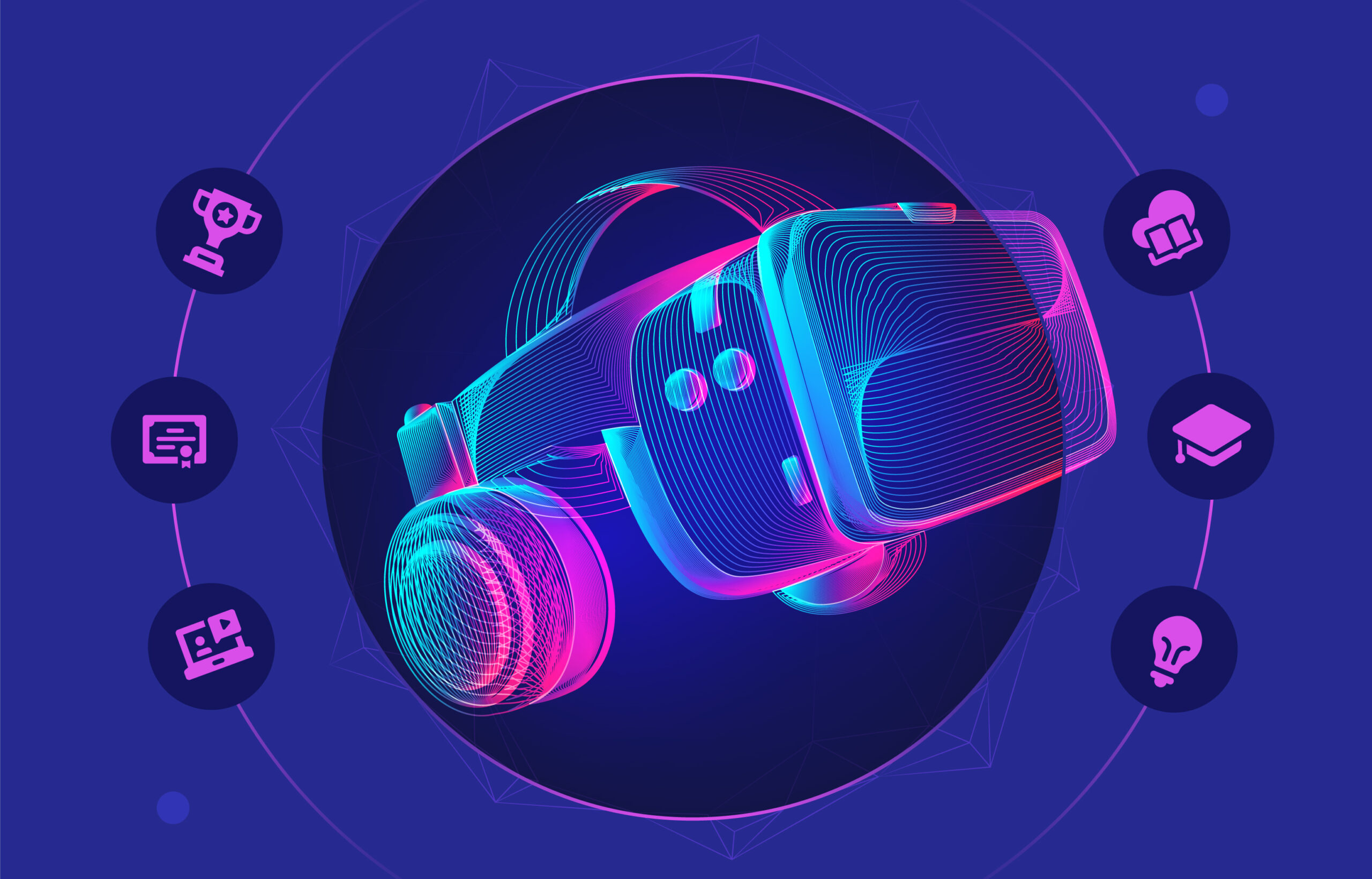Learning and development professionals often strive to engage employees. Engaged employees retain the training at a higher rate, which means that the program provides a greater return on investment. Every learner is unique in how they process and comprehend information. Delivering engaging and interactive experiences can develop talent, help employees learn new skills and improve their performance and greatly enhance employee engagement. Leveraging technology in the right way can help L&D teams achieve their goals. Tools like immersive learning technologies which includes virtual reality (VR), augmented reality (AR) and 360-degree video make training programs more engaging and improve employee performance.
What is Immersive Learning?
Immersive learning provides artificial, digitally produced content and environment that replicate real-life scenarios to learn and refine new skills and techniques. Through immersive technology, learning experiences are enhanced and active participation is promoted, allowing the learners to visualize the most important points and concepts. Immersive learning is facilitated by technologies such as virtual reality, augmented reality, 360-degree video, and gamification.
Types of Immersive Learning Tools:
• Augmented reality (AR)
AR blends digital content with real-world surroundings, placing virtual objects in a real-world setting. AR lets users interact with images in the real world through the use of headsets or mobile devices. The content can be triggered by pointing your phone or tablet at a particular object or location, it allows the user to explore the object/equipment and helps them to learn how to use it. In pharmaceutical industry, AR is used by medical professionals to visualize the mode of action of new therapies as it provides a greater understanding of how a treatment works by being able to visually view its structure and mechanism.
• Virtual reality (VR)
VR allows learners to immerse themselves in virtual environments. Learning by replicating real-life scenarios in an artificial environment is a tried and tested method of providing learners with unique vocational training. It allows the user to interact with virtual characters, pick up and move objects, turn on or turn off a device, walk around a room, and characters can interact. VR headsets are used to access content, often along with headphones and controllers to navigate the environment. A growing number of industries are using virtual reality training, but manufacturing industry benefits most from VR. The safety of the trainees is very important when training for a highly hazardous job. VR training can be utilized to train the employees as it shows its exceptional ability to put trainees in a realistic environment without causing injury to them.
• 360-degree Video
With video learning, trainers can capture situations and training environments in 360-degree video that would otherwise be difficult, expensive or dangerous for learners to travel. The employees can view with 360-degree video by scrolling or dragging their mouse on desktop or mobile devices and by wearing any VR headset for an immersive experience. For example, the 360-degree video is used in the real estate industry for virtual tour which allows the customer to view the place from their home which saves time and money.
Benefits of Immersive Learning:
• Improves Workplace Training
Learning through immersive experiences allows employees to develop their skills through practical experience and accurate feedback. Through immersive learning, companies can safely train learners in otherwise high-risk situations, onboard new employees efficiently and help employees improve their soft skills in order to be more effective. Additionally, it allows the learners to learn by repeating each activity as many times as he/she wishes until the learner is confident in using the knowledge in a real-life situation. A high completion rate is often associated with immersive learning courses because of their highly interactive nature and ability to keep learners’ attention.
• Safe Learning Area
The goal of immersive learning is to provide learners with the opportunity to practice skills they will need in the real world in a safe and controlled environment. Learning in an immersive learning environment involves developing interpersonal skills, observing unsafe situations or practicing safety protocols without putting themselves at risk or damaging the company’s reputation. Immersive learning provides a risk- free environment where trial and error can take place while experiencing rich feedback and without disturbing or impacting customers and processes in any way. The virtual world lets learners interact with objects almost like they would in the real world. VR provides learners with the opportunity to practice their skills in a controlled environment, allowing them to become immersed in their learning.
• Higher Employee Retention
Companies need to invest in their training programs in ways that distinguish them from the competition and let their employees know that they’re valued. The employees consider professional development in the workplace as important as the job they do. Immersive learning encourages learners to be more active and engaged. The learners are placed in a real-life scenario that grabs their attention and removes the external distractions with more focused interaction with the environment. The simulated environment makes it easier for the learners to connect between the learning and application of it at the workplace. The whole experience engages the learners and motivates them to learn and grow in an organization which leads an employee to stay with a company for a longer period of time. Also, engaged employee leads to better productivity, employee satisfaction and higher employee retention.
Conclusion:
Immersive learning is the need for modern learners and crucial to cater to their learning needs. According to a 2020 study from PwC, VR learners are 4X faster to train and their own research has shown nearly 90% of their learners were more confident with our VR training. Developing new skills and knowledge is easy with immersive learning for learners of all ages and levels of expertise. Immersive technologies have changed from a niche to a mainstream application, with the advent of virtual reality headsets becoming more affordable and mobile technology improving.

